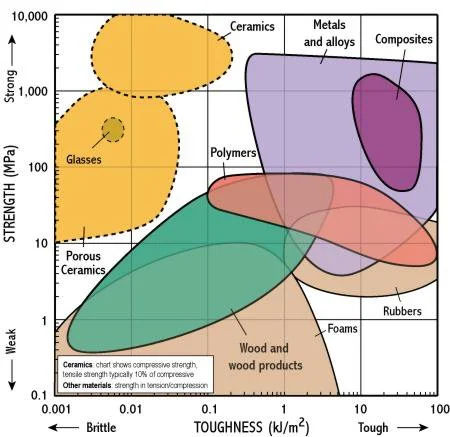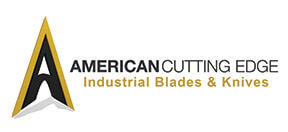Hardness vs. Toughness

Industrial knives are generally used to cut or shred an incredible variety of materials. From food and plastics to the toughest steels and non-ferrous materials, industrial knives and cutting edges are used to reduce the size and process all kinds of materials. Because of the wide variety of applications leading to very diverse stresses on the cutting edge, a variety of knife materials must be used to achieve the needed cutting result while also providing optimal life for the edge or blade.
The characteristics we try to achieve for the cutting edge are a combination of edge holding capability or “wear resistance” combined with toughness. The perfect knife would be one that would hold its edge indefinitely combined with one that could take severe stresses and not break. There are no universally accepted measures for either of these characteristics, but the industry has developed a couple of quantifiable measures that give us guidance in evaluating the functionality of industrial knives.
Hardness
There are a variety of scientific measures of the hardness of materials, but for purposes of industrial knives, the most widely accepted measure is the Rockwell C scale. While not a perfect measure of resistance to wear, the rate of wear of an industrial knife correlates well with this measure. Essentially, the harder the Rockwell rating for a given knife, the more wear life or wear resistance the knife should exhibit. It should be noted that if other sources of wear are involved besides friction, this measure may not give good guidance. An example of this situation might be in a chemical environment where chemical erosion may be the primary cause of knife wear.
Toughness
Here again, there are no clear and definitive measures of toughness for industrial knives. One of the best measures to give guidance in this regard is Transverse Rupture Strength. This measure only gives part of the story, but the higher the TRS reading, the tougher the knife is likely to be. There are other measures that also give guidance such as Young’s modulus of elasticity, but for general applications, the TRS reading gives the best and easiest guidance.
Unfortunately, Hardness and Transverse Rupture Strength are usually inversely proportional. As a material is made harder, it tends to become more brittle and generally has a lower TRS.
To combat this problem, different materials that yield different wear characteristics and toughness characteristics can be used to get different performance criteria. Changing materials can also combat other wear issues like chemical erosion by using resistant materials such as stainless steel. Keep in mind that while it may seem logical to use the material with the best combination of wear and toughness characteristics for every application, materials that fit that description tend to be more expensive and so cost becomes a factor. The most economical solution for a given application is the goal. Our applications staff can help you design a knife configuration and recommend material that will give you the best “Value” solution.
Other factors to consider include edge preparation, coatings, plating and other material enhancement processes. All have an impact on a knife's durability (toughness) and hardness.
Contact American Cutting Edge today and let us help you determine the best toughness/hardness for your application. We know knives and razors!

